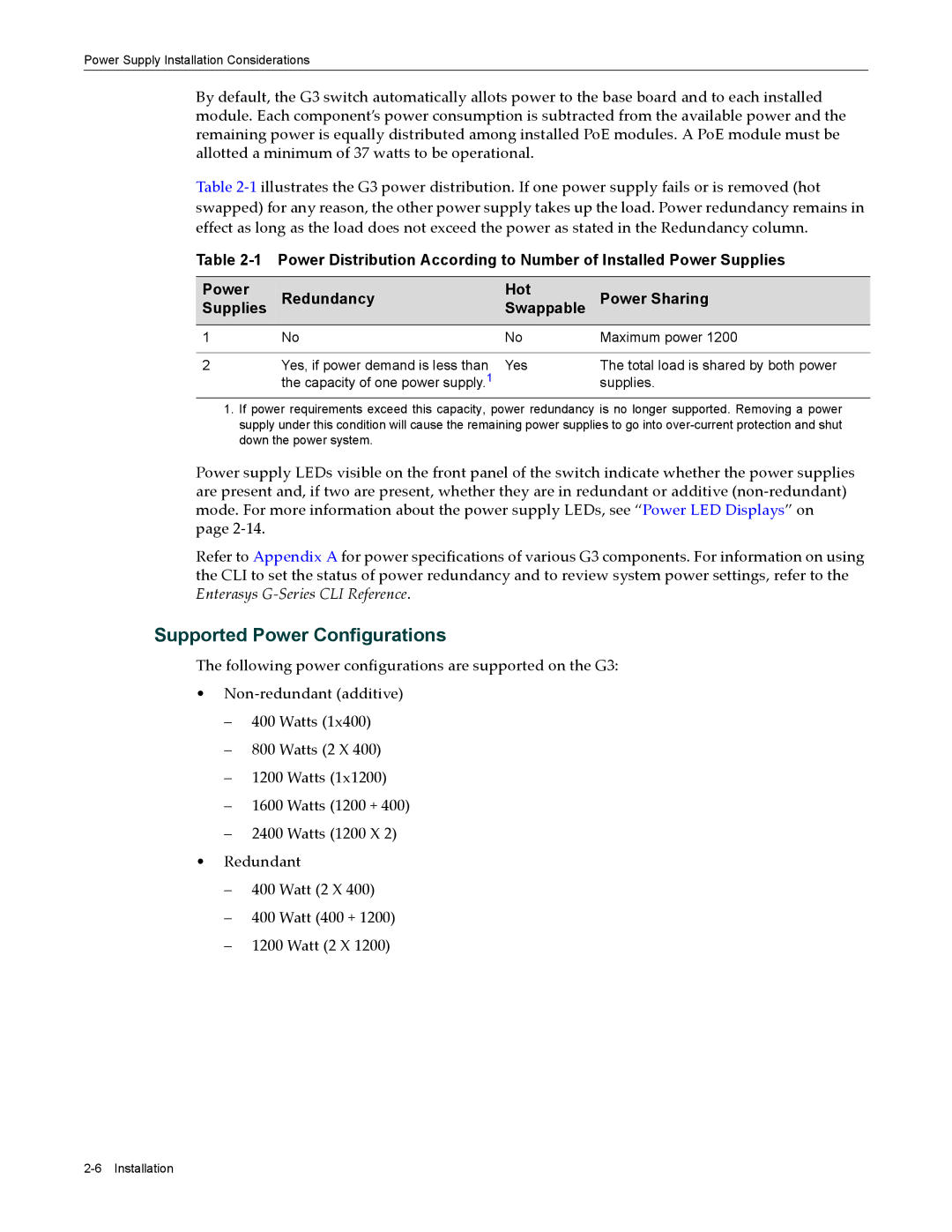
Power Supply Installation Considerations
By default, the G3 switch automatically allots power to the base board and to each installed module. Each component’s power consumption is subtracted from the available power and the remaining power is equally distributed among installed PoE modules. A PoE module must be allotted a minimum of 37 watts to be operational.
Table 2‐1 illustrates the G3 power distribution. If one power supply fails or is removed (hot swapped) for any reason, the other power supply takes up the load. Power redundancy remains in effect as long as the load does not exceed the power as stated in the Redundancy column.
Table
Power | Redundancy | Hot | Power Sharing |
Supplies | Swappable | ||
|
|
|
|
1 | No | No | Maximum power 1200 |
|
|
|
|
2 | Yes, if power demand is less than | Yes | The total load is shared by both power |
| the capacity of one power supply.1 |
| supplies. |
1.If power requirements exceed this capacity, power redundancy is no longer supported. Removing a power supply under this condition will cause the remaining power supplies to go into
Power supply LEDs visible on the front panel of the switch indicate whether the power supplies are present and, if two are present, whether they are in redundant or additive (non‐redundant) mode. For more information about the power supply LEDs, see “Power LED Displays” on page 2‐14.
Refer to Appendix A for power specifications of various G3 components. For information on using the CLI to set the status of power redundancy and to review system power settings, refer to the Enterasys G‐Series CLI Reference.
Supported Power Configurations
The following power configurations are supported on the G3:
•Non‐redundant (additive)
–400 Watts (1x400)
–800 Watts (2 X 400)
–1200 Watts (1x1200)
–1600 Watts (1200 + 400)
–2400 Watts (1200 X 2)
•Redundant
–400 Watt (2 X 400)
–400 Watt (400 + 1200)
–1200 Watt (2 X 1200)
